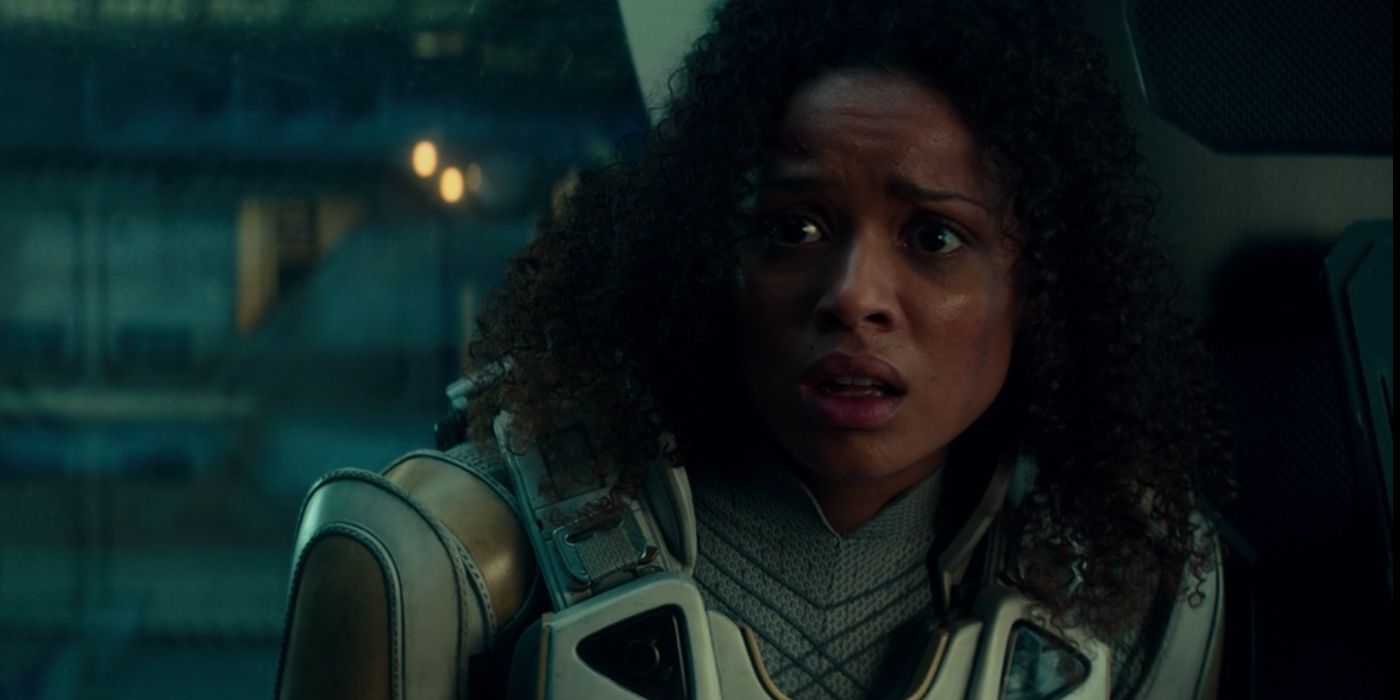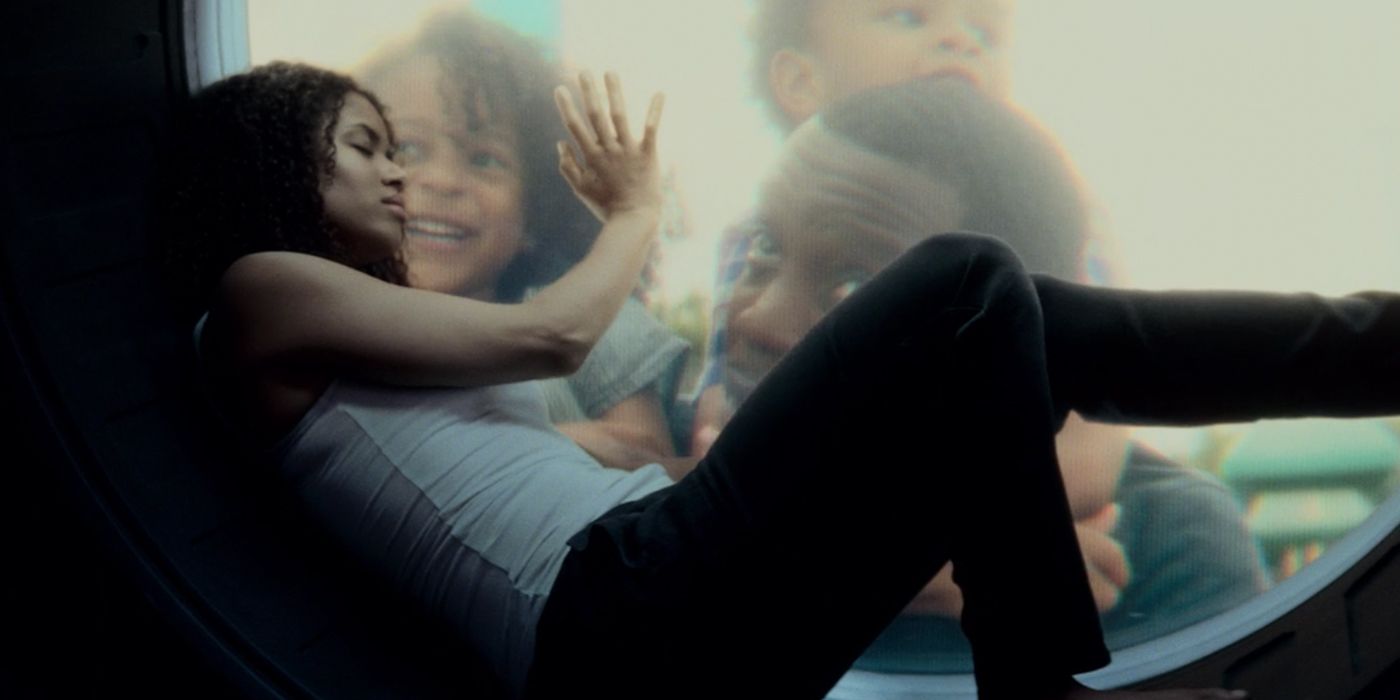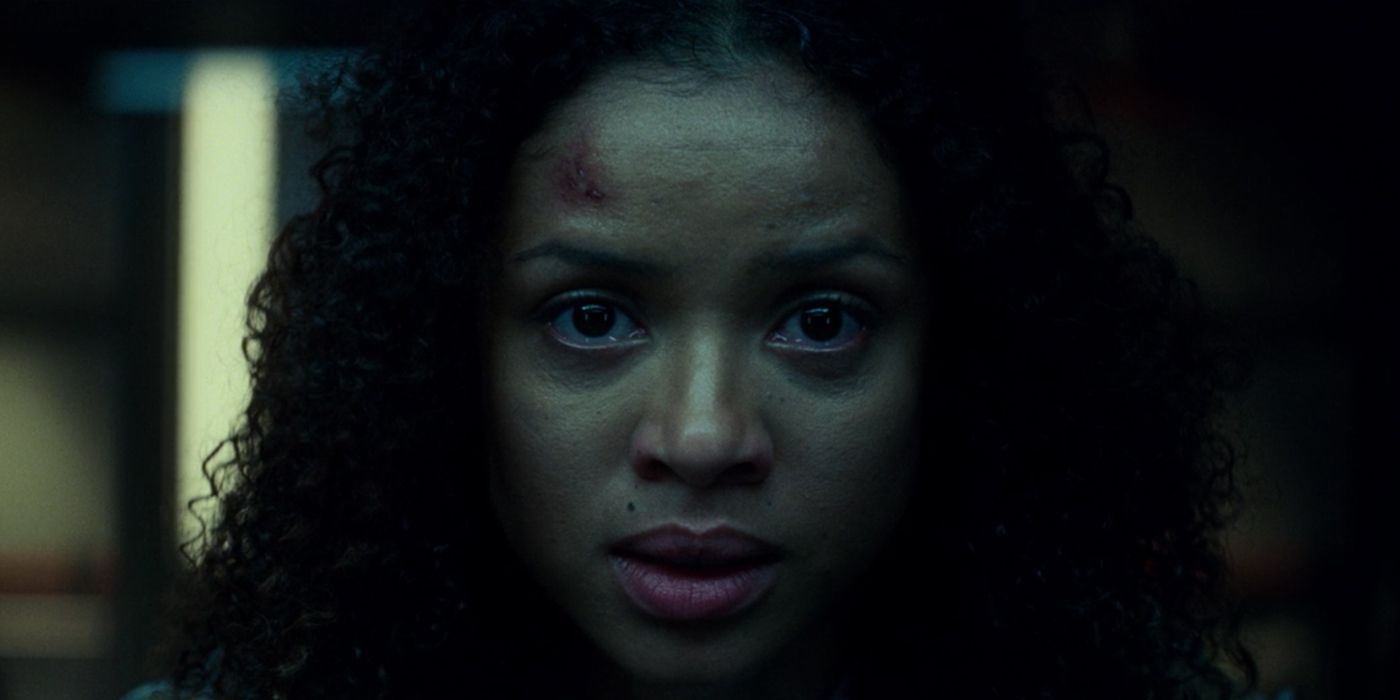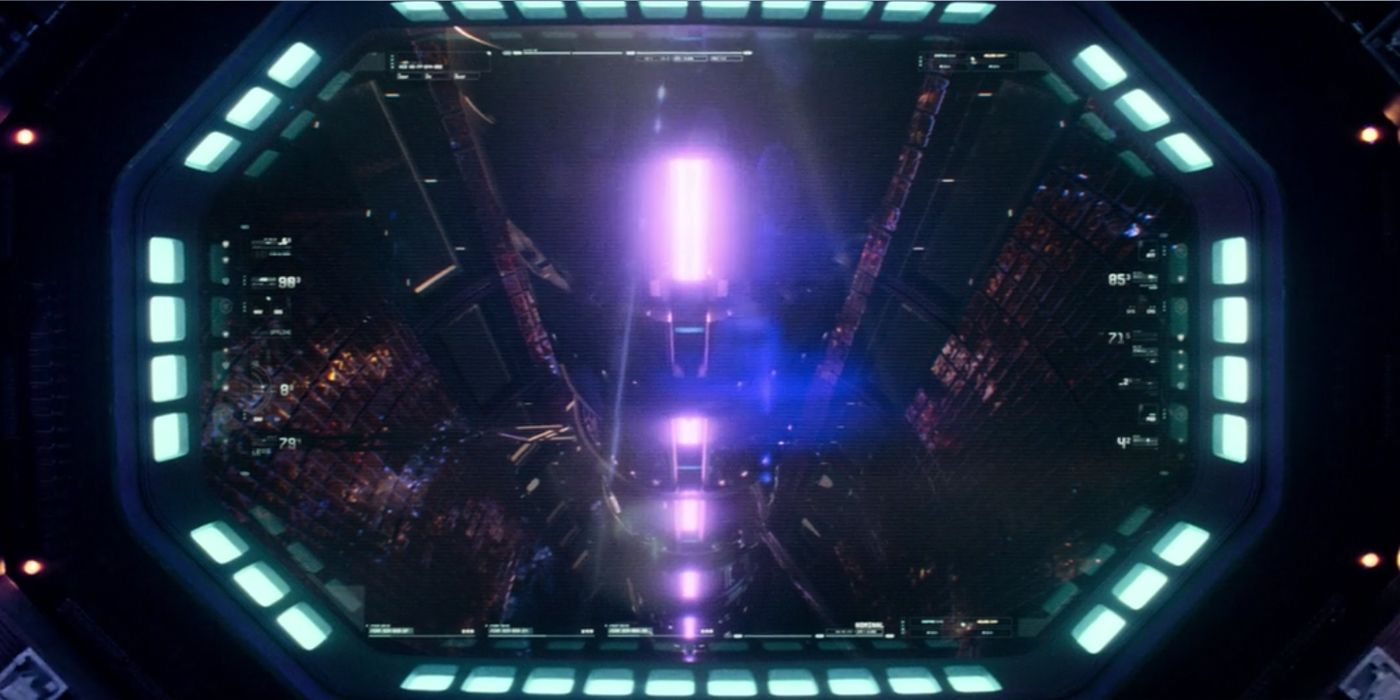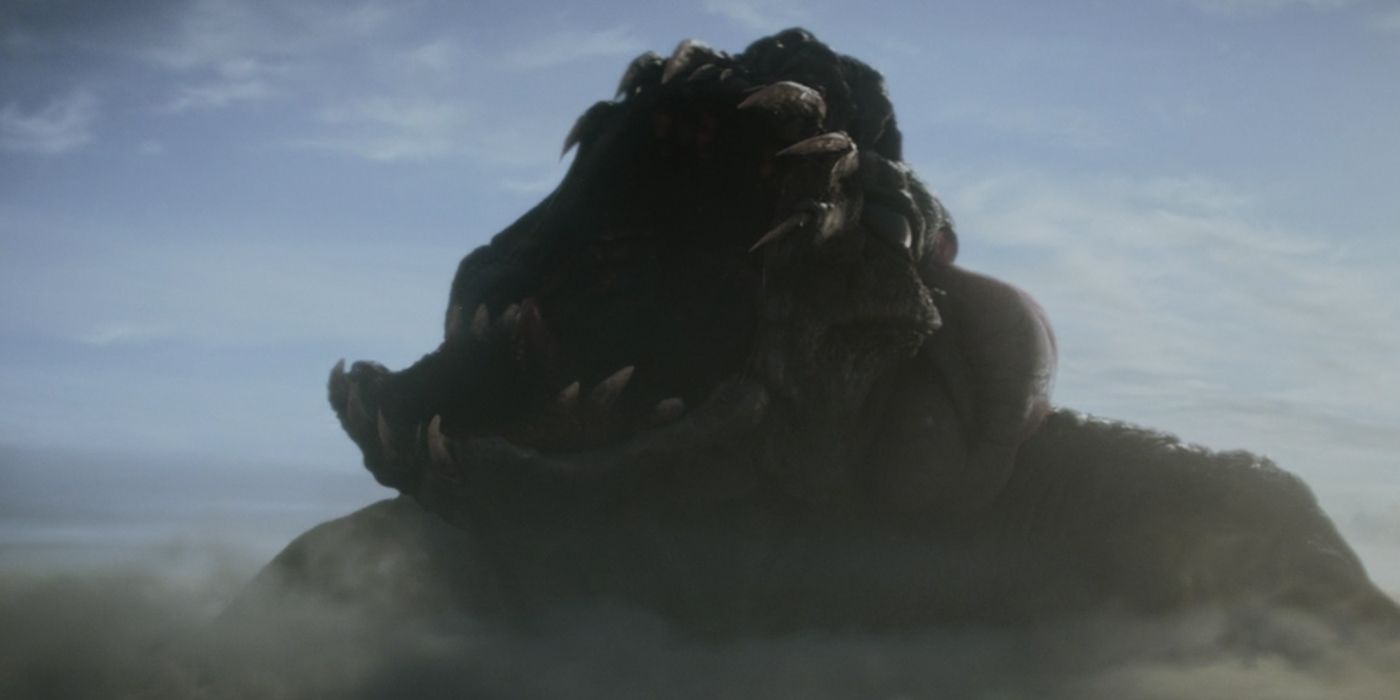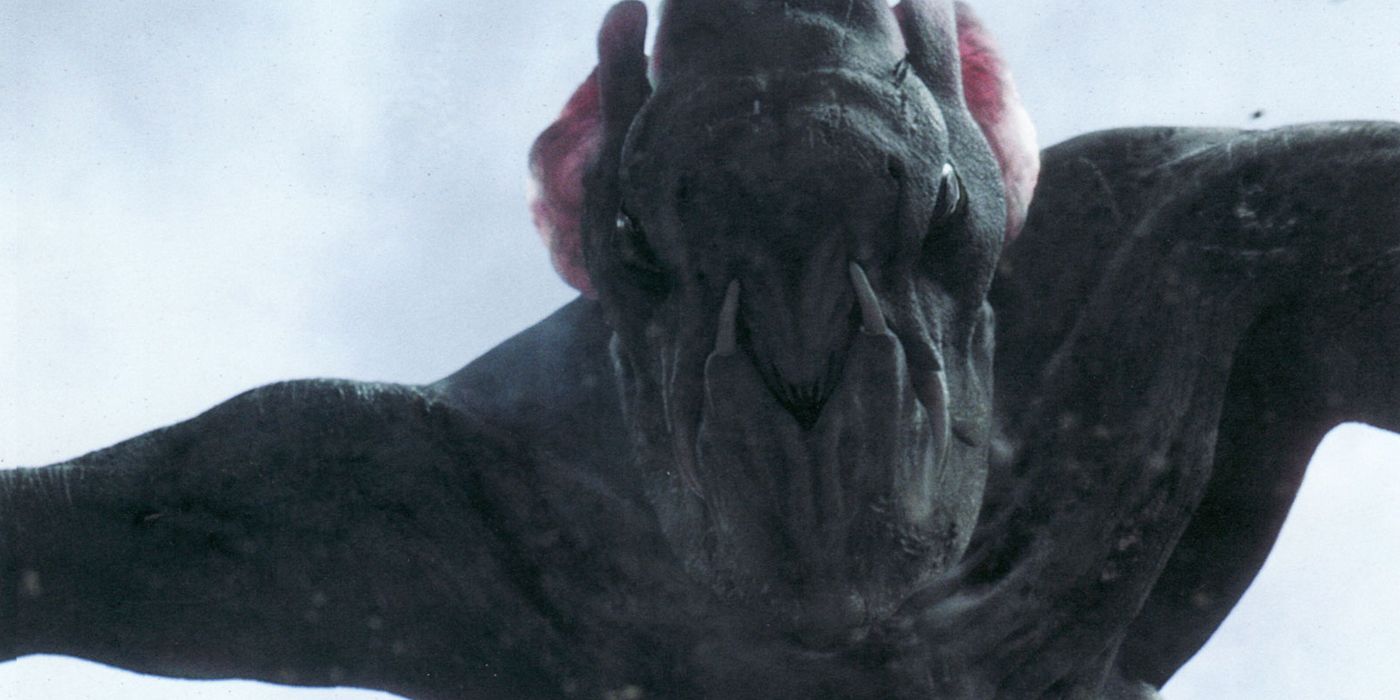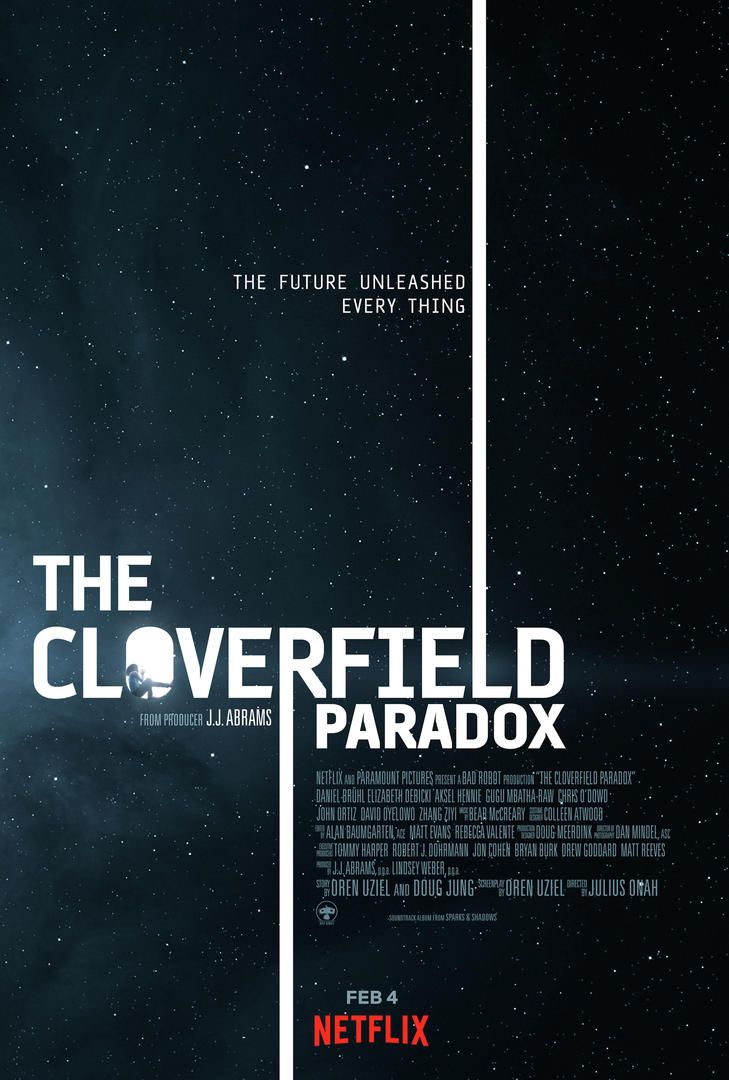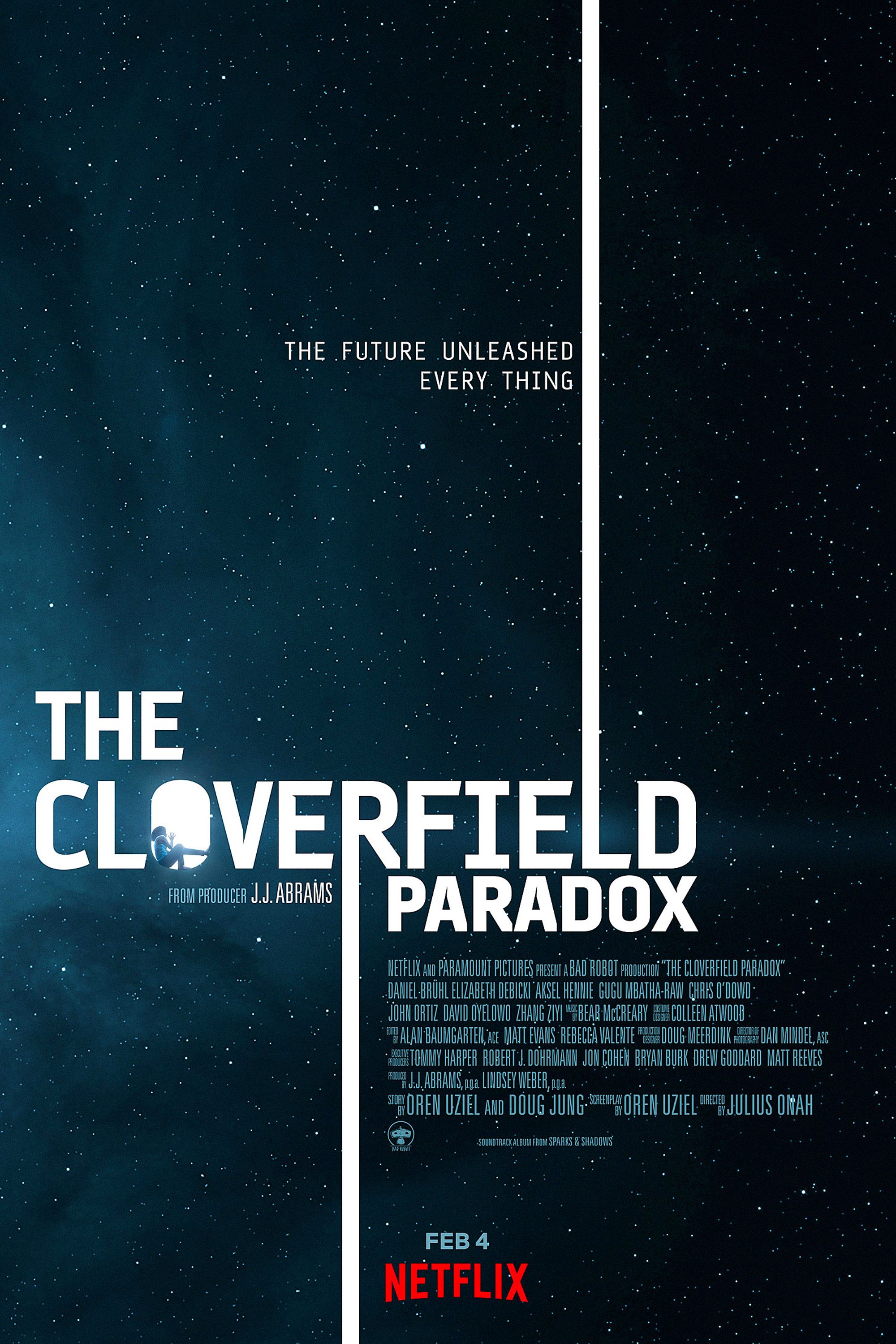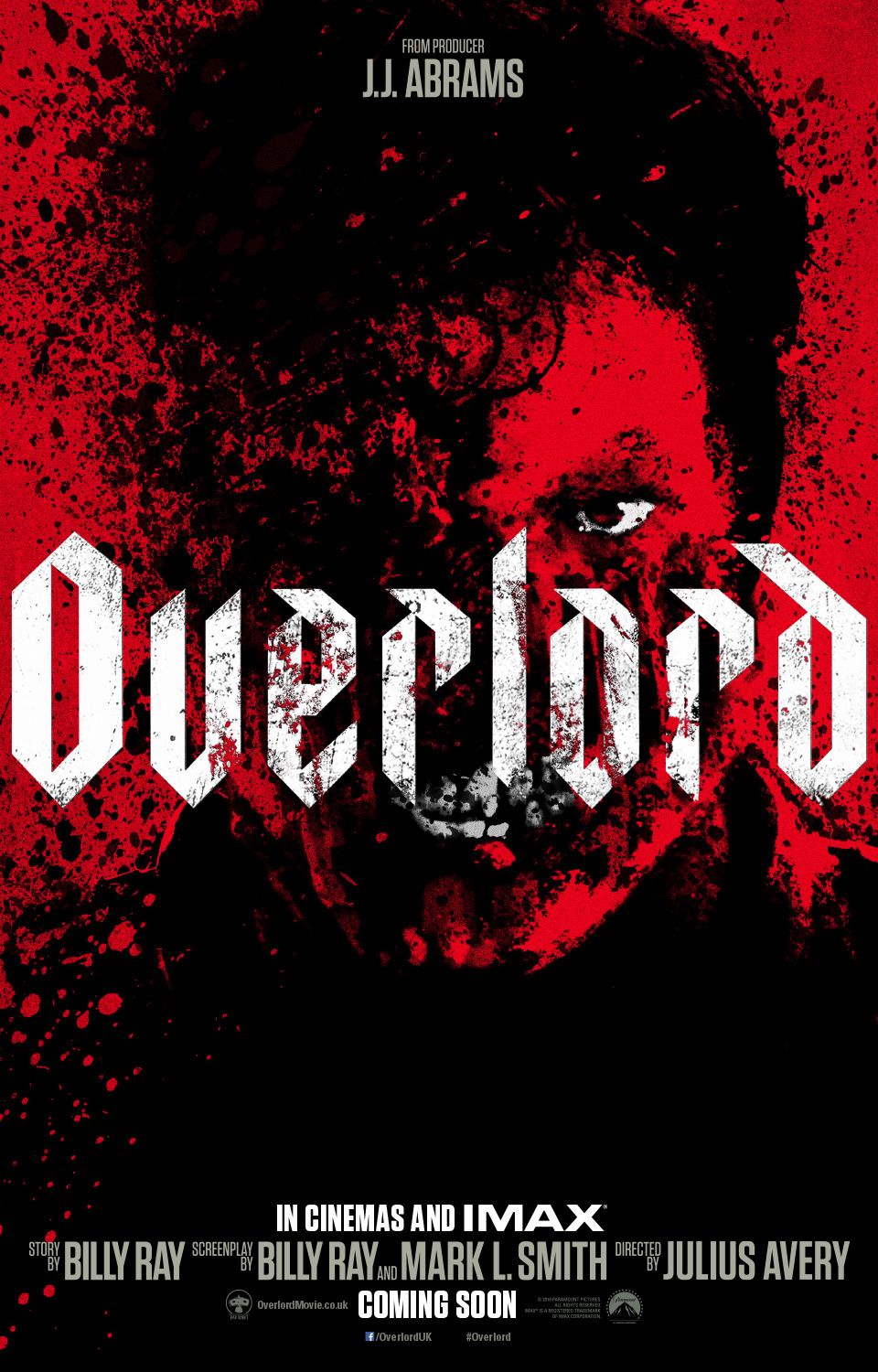The Cloverfield Paradox, the third movie under the Cloverfield franchise banner, has already caused quite a stir thanks to its sudden release on Netflix, but it's only going to continue to cause discussion thanks to its shocking ending.
The film, originally called God Particle, has been on Cloverfield fans' radars for a long time, with its release date constantly pushed back (it placed on Screen Rant's most anticipated films of 2017 and 2018 list as a result). All that's really been known about Julius Onah's film is its cast - Daniel Brühl, David Oyelowo, Elizabeth Debicki, Gugu Mbatha-Raw - and very basic premise - energy experimentation leaves a space station stranded away from Earth. The finished Cloverfield Paradox goes far beyond that, exploring alternate dimensions, modern warfare, an energy crisis, and, of course, the origins of the monster from the first Cloverfield in 2008.
Related: Cloverfield 3: Every Plot Secret From The Viral Marketing Campaign
There's a lot to unpack about the film and, due to the nature of the franchise, a lot of questions left dangling. Now you've seen the film, get to the bottom of all its dimensions with our ending explainer.
This Page: The Cloverfield Paradox's Alternate Dimensions Explained
The Cloverfield Paradox's Alternate Dimensions Explained
The main plot of The Cloverfield Paradox deals with the crew of the Cloverfield Station being transported to an alternate dimension. At first, they believe the Earth has vanished but as things get weirder and weirder slowly realize they're the ones who've moved - in more ways than one.
The Cloverfield Paradox subscribes to the multiverse theory - that there is an infinite number of parallel universes, each subtly different from our own - but hones in on just two colliding. In our world (A), the Cloverfield Station runs its experiment and is transported to another dimension (B) whose Station is destroyed by Schmidt's (Daniel Brühl) sabotage, part of a bigger descent of Earth B into all-out war. There are other, smaller differences, most pointedly the absence of Tam (Zhang Ziyi) and Ava (Gugu Mbatha-Raw) from Universe B's mission, the latter due to her children still being alive (a key story point we'll get back to). Things aren't as simple as a one-to-one transportation, however. Various elements of the new dimension bleed over into Universe A's station - Schmidt's covert orders from his native Germany, Mundy's (Chris O'Dowd) severed arm, Ava's messages to the ship - slowly revealing that the new dimension may be infecting the astronauts' home.
This is the Cloverfield Paradox itself, outlined by Professor Mark Stambler in an interview watched on the station before the experiment. Parts of his theory line up with real-world concerns over the likes of the Large Hadron Collider at Cern (also trying to recreate the Higgs-Boson particle), suggesting that the creation of the new energy will create a rift in the fabric of space-time. His true fears, however, go full sci-fi: that alternate dimensions will clash with our own, depositing all sorts of monstrous horrors on our world. This happens throughout the movie on the Cloverfield Station, but also in a more apocalyptic sense back on Earth, unseen for most of the film until that final shot. However, before getting into that, we need to look at what The Cloverfield Paradox is really all about.
The Cloverfield Paradox Is A Deconstruction Of The Needs Of The Many
From the first scene where Ava and Michael (Roger Davies) debate her going on a space mission of unclear length, The Cloverfield Paradox makes abundantly clear it's going to be about the question of doing the right thing at the expense of one's personal life. Do the needs of the many really outweigh the needs of the few?
Related: J.J. Abrams Has Already Made Cloverfield 4
This is most pointedly shown in Ava's arc. She makes the decision to put her relationship on the back burner to go on the Cloverfield mission, a choice we later learn she only made in Universe A in reaction to the death of her children (they were killed in a fire resulting from her siphoning power); in Universe B, she stayed on Earth. Here we have two Avas, each making polar opposite decisions that impact the future of humanity based entirely on her family life. There's an autonomy in the decision, yet it's influenced by a greater tragedy (or lack thereof).
Together, the Avas make immediately clear The Cloverfield Paradox isn't blindly endorsing ultimate sacrifice; both do good in their own ways. The film throughout presents the idea of balance and careful choice, with the understanding that the world is unpredictable (obviously shown with the space station's increasing problems and its' crews horrifying deaths, but also in the final scene where Ava and Schmidt's return to Earth comes with the most monstrous of caveats).
Within this exploration is the overwhelming power of loyalty and bias. Schmidt B chose to sabotage the Shepard tests out of patriotism, hoping that a delay in a replenishable energy would help his native Germany beat Russia, and Mina B becomes the movie's villain entirely out of her desire to save her dimension; she'll kill three to save her eight billion, but in doing so potentially dooms another Earth. In all cases of "the needs of the many" there's a pervasive sense of wanting to do the right thing, but a counter-clarification that "right thing" is a very vague, self-defined notion that comes from personal experience (for good or ill).
The Energy Crisis
At the forefront of The Cloverfield Paradox is an energy crisis; we open with news reports detailing a shortage and witness part of a rolling blackout, and every step along the way is made knowing that the Shepard test will define the future of humanity. The Earth (in both dimensions) stands on the brink and, as seen by Dimension B, old-school war could easily break out. Explicit attention is drawn to Germany and Russia as waring states, and the notion of "boots on the ground". The film evokes a geopolitical and military backdrop reminiscent of the early 20th Century more than the 21st - there's only a half consideration of nuclear attack - putting forth the notion that without energy our world slowly devolves.
Related: Cloverfield 3 Trailer, Cast, Plot, Every Update You Need To Know
This unfolds alongside the primary altruism theme, although doesn't have much in way of direct interlinking in this story. That said, it does have greater franchise importance. Cloverfield has always been a series dominated by corporate ills and the dangers of capitalist energy specifically; the monster was originally believed to have been awoken from its ocean slumber by oil drilling from Japanese-owned Targruato, a company where 10 Cloverfield Lane's Howard Stambler (no relation to Mark) was an employee. Across the three movies, Cloverfield has presented a case against big oil, but with Paradox seems to suggest it's so ingrained in our modern culture there's no viable way to escape.
The Cloverfield Monster Planet
The biggest shock of The Cloverfield Paradox is saved for last. Just as Ava and Schmidt return home from Cloverfield Station, we learn that something even more horrific has been unfolding on Earth: an infestation of monsters. As their escape pod breaks through the clouds, a giant Cloverfield monster bursts upward and gives a full, deep scream.
Evidently, Mark Stambler's predictions have proven more accurate than anybody dared image, with monsters coming over from other dimensions and rampaging across the entire planet. This is teased throughout the film with Michael's B-plot, seeing him slowly uncover the threat and saving a little girl while trying to get word through to both her parents and Ava. Upon first viewing, this is just a flipside compliment (an alternate dimension, if you will) of Ava's arc, with her husband likewise gaining catharsis through the horror, but in retrospect, it's full of repeated hints that something horrific has happened on Earth. The true extent is hidden as part of the final twist, but it's safe to assume we're dealing with a global catastrophe. This is the Cloverfield Monster Planet.
One very important note to make about the monsters is that the one shown at the end is considerably larger than what we saw in the original Cloverfield; that was about 250 feet tall, with long arms that meant it could just about reach as high as a skyscraper. This new monster towers far above that, reaching up into the clouds. It had long been suggested - by both filmmaker comments and the tie-in manga - that the Cloverfield monster was just a baby, and this last shot would seem to confirm that.
Related: J.J. Abrams Has Already Made Cloverfield 4
The Original Cloverfield Monster's Origin Explained
But while the world in the near future (the ARG places the events of The Cloverfield Paradox taking place in 2028, which the technology appears to line up with) is now ravaged by monsters, that doesn't singularly explain the presence of the baby in New York City in 2008, over twenty years prior. The explanation comes in passing by Stambler; his theory on dimension bleed effects space and time. He suspects that any schism would lead to rifts being created in the past and future, as well as the present nexus point. As such, while the worst impact seems to be in 2028, aliens and other monsters have appeared all along the timeline. The New York incident was a lone case.
What's commendable about this reveal is that while it provides greater context for Cloverfield's monster, it doesn't completely remove the mystery. Stambler outlines several of the most popular options for the monster's origin - extra-terrestrial, sub-oceanic - and the film never tries to go further in clarifying, ensuring the allure of confusion that makes Matt Reeves' found footage movie so enduring remains. It's further suggested that the aliens of 10 Cloverfield Lane came via a similar a method, and that whatever supernatural forces the Nazis are working with in Overlord - recently confirmed to be Cloverfield 4 - are similar inter-dimensional travelers, although against no specific details are provided there.
-
The Cloverfield Paradox has completely redefined the franchise, extending the series' surprise marketing approach to the actual release of the film, but also providing some sci-fi context to the disconnected adventures. Cloverfield is not, as assumed after 10 Cloverfield Lane, an anthology series akin to The Twilight Zone, but a series of standalone, alternate dimension stories that together tell an abstract story of humanity across the multiverse under threat. Who knows where it goes from here.
Next: How All The Cloverfield Movies Connect

